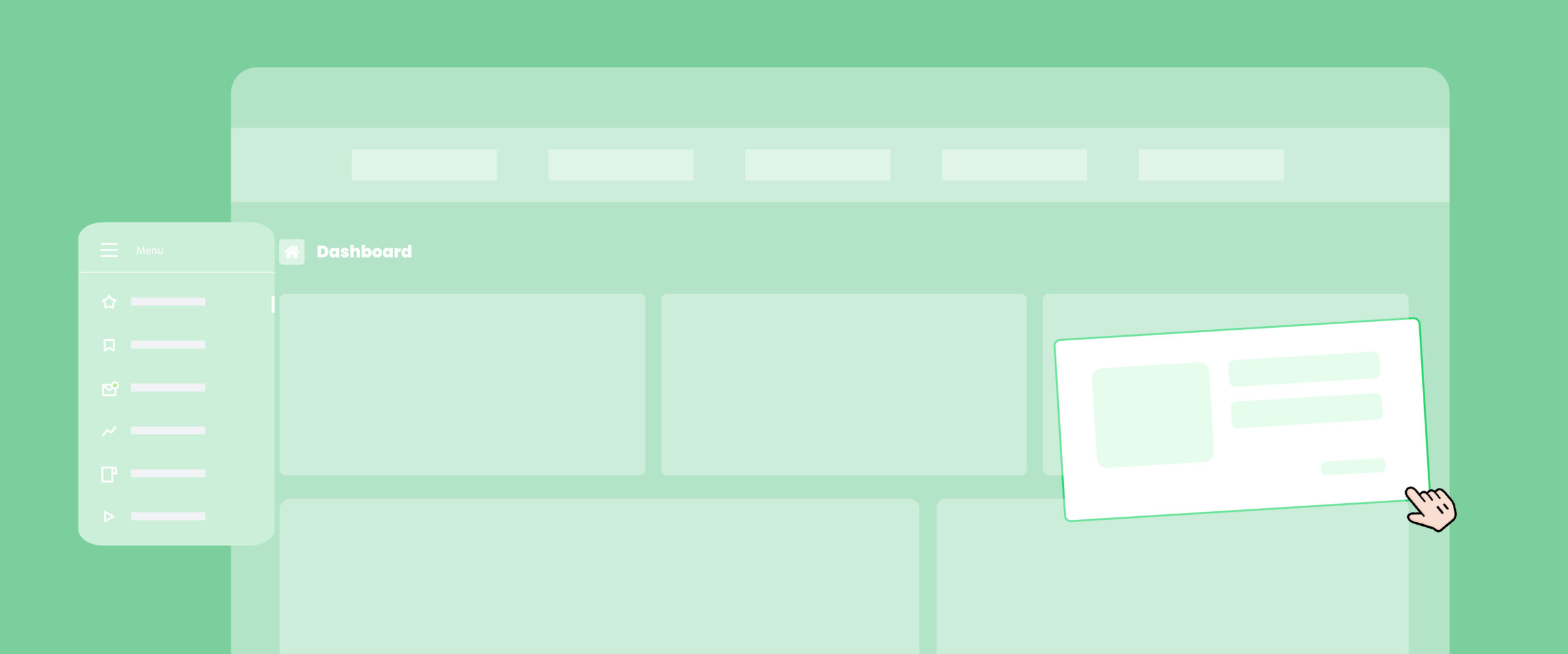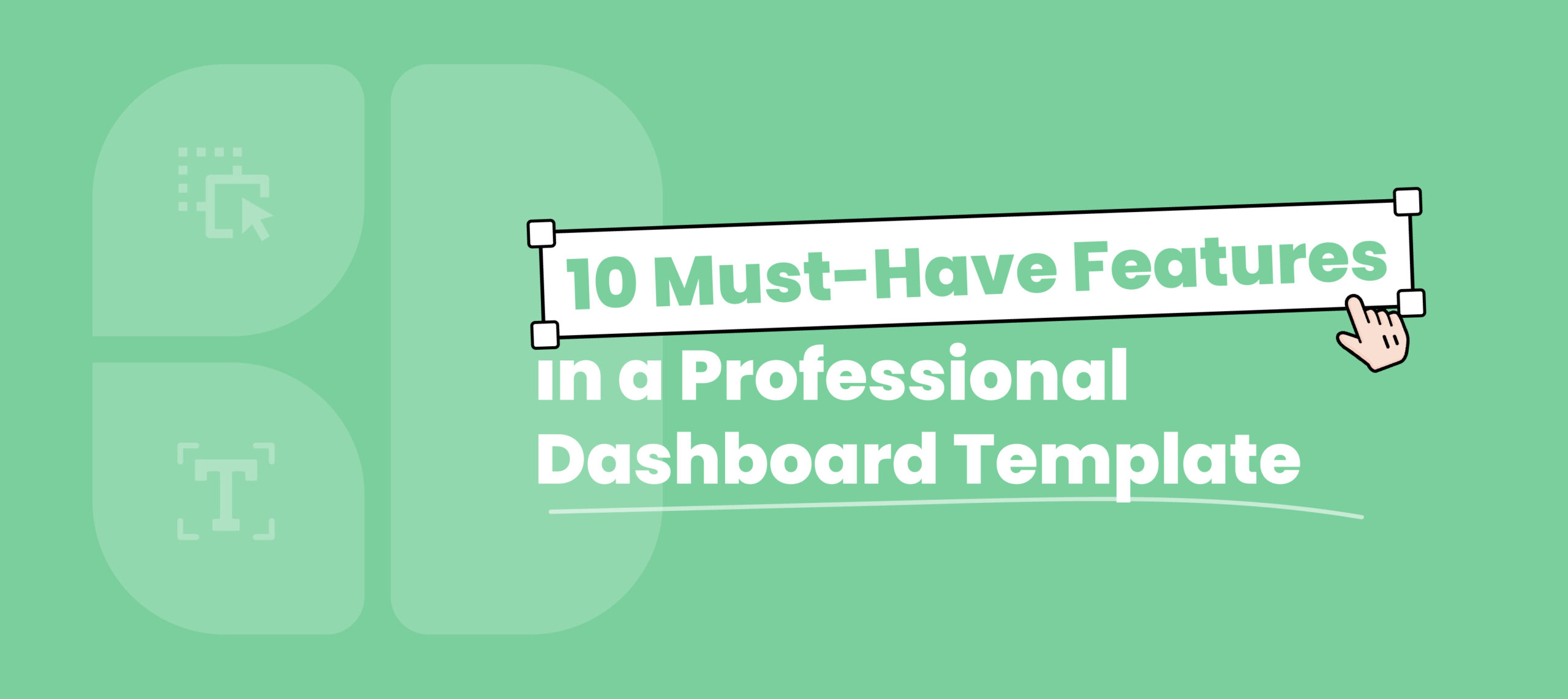In today’s fast-paced business world, data analysis and informed decision-making are more important than ever. Dashboards have become critical tools for providing real-time insights and tracking performance. However, creating an effective dashboard requires more than just data visualization. In this article, we are not discussing the fundamentals of dashboards. Instead, we will discuss the must-have features that define a ready-to-use professional dashboard template.
Key features of a Professional Dashboard Template
The features in professional dashboard templates are chosen based on industry standards, user feedback, and best practices to provide a seamless and intuitive user experience. Here we have listed the first ten must-have features. Let’s begin.
1. User Authentication and Access Control
It is necessary to implement a ‘user authentication and access control’ feature in order to maintain the security of sensitive data. This allows administrators to define user roles and permissions, which ultimately helps keep data safe.
To better control user access, it is recommended to use role-based access control (RBAC) systems. This allows administrators to assign different permission levels (such as admin, editor, and viewer) to users. It gives them access to specific dashboard features and data.
Admin: This is the highest level of administration, with exclusive access to all modules and features. It allows other levels of user management, data access restrictions, and account adjustments, such as assigning filters or managing data sources and dashboards.
Editor: A step below the admin, with access to a limited set of modules and features, unable to delete data sources. Editors can modify shared dashboards and allocate viewer access.
Viewer: This is a limited access role with viewing rights only, as determined by the admin. This role is useful for sharing selected dashboard features without granting full access to the analysis process. It is ideal for scenarios like sharing relevant data with managers or third parties without exposing complete information.
2. Performance Metrics and Analytics
A dashboard feature that helps track, analyze, and display key performance indicators (KPIs) and other essential metrics. This feature allows users to monitor different performance aspects within their organization or specific areas of interest. This is an example of a feature that could be the focus of a dashboard, such as an analytics dashboard.
Data Collection: The dashboard aggregates data from diverse sources like databases, APIs, or third-party integrations, encompassing sales figures, website traffic, customer metrics, financial data, and more.
Data Analysis: Employing analytical tools, the dashboard processes and analyzes collected data, deriving insights like conversion rates, revenue growth, customer acquisition costs, or customized KPIs.
Visualization: The data is then converted to visualization through charts, graphs, tables, or maps, facilitating an intuitive understanding of trends, patterns, and outliers, empowering users to make informed decisions efficiently.
3. Cross-device Compatibility and Responsive Design
A professional dashboard template should be responsive and compatible with different devices and screen sizes. It should provide accessibility and usability across desktops, tablets, and mobile devices. It’s important to ensure that the dashboard template adjusts seamlessly to different screen sizes and resolutions. One of the best responsive dahboards are built in Bootstrap frameworks.
Adaptation: To ensure that the dashboard adapts to different screen sizes, which is crucial for providing a consistent user experience across devices.
Performance Optimization: Optimizing performance ensures that the dashboard loads fast and functions smoothly on all devices, improving user satisfaction and engagement.
Accessibility: Ensuring compatibility across different web browsers is fundamental for achieving a wider audience and ensuring even functionality for all users.
4. Data Visualization Tools
Robust data visualization tools such as charts, graphs, and maps are essential for effectively presenting complex data sets in an intuitive and easily understandable format. Incorporate interactive charts and graphs such as bar charts, line graphs, and pie charts using libraries like Chart.js or D3.js. This will allow users to visualize data trends and patterns.
Interactive Visualizations: Many dashboard templates offer interactive visualization options, allowing users to interact with the data dynamically. This may include features like hover-over tooltips, clickable elements, zooming, panning, and filtering, enabling users to explore and analyze the data from different perspectives.
Chart Types: Data visualization tools typically support a wide range of chart types, including bar charts, line charts, pie charts, scatter plots, heat maps, and more. Users can choose the most suitable chart type based on the nature of their data and the insights they want to convey.
5. Customizable Layouts

Providing flexibility in layout customization improves usability and personalizes the dashboard to individual user needs. Users can rearrange widgets and modules by dragging and dropping them into different positions on the dashboard canvas, similar to how WordPress allows customization of website layouts. With the increasing demand for personalized user experiences, customizable layouts help users to tailor the dashboard to their specific needs and preferences, enhancing efficiency.
Flexible Arrangement: Users can freely rearrange dashboard components to fit their preferences and needs.
Tailored Interface: Customizable layouts enable users to arrange components according to their workflow, enabling easier access and analysis.
6. Interactive Elements
Interactive elements promote user engagement and facilitate the exploration and analysis of data. Implement filter dropdowns for refining data on specific criteria, clickable data points on charts for drill-down analysis, and collapsible sections for organizing content efficiently.
Engagement Boost: Interactive elements foster active user participation, enhancing their overall dashboard experience.
Customized Data Exploration: These elements empower users to tailor their data exploration by interacting with the dashboard interface, allowing for actions such as filtering, drilling down into details, or adjusting visualization settings based on individual preferences.
Informed Decision-Making: Interactive features in dashboards empower users to pull insights and make informed decisions by enabling real-time data interaction and analysis.
7. Real-Time Data Updates

Real-time data ensures users have the most updated information for convenient decision-making. For instance, real-time stock market data, social media analytics, or website traffic statistics that update automatically without the need for manual refreshing, providing users with the latest information immediately.
Continuous Data Refresh: Real-time data updates automatically fetch the latest data from connected sources, providing users instant access to up-to-date information without a manual refresh.
Quick Insight: Users gain immediate insight into changing trends or anomalies in their data, allowing quick identification of emerging issues or opportunities without delay.
8. Export and Sharing Options
This feature allows users to export and share data and encourages collaboration and knowledge sharing. Also, it allows users to share insights derived from the dashboard with stakeholders and collaborators. Export and sharing option enables users to export data for additional analysis or reporting.
Exporting Data: Dashboard templates offer export options for extracting raw data, visualizations, or entire dashboard views in formats like PDF, Excel, CSV, or image files. This helps further analysis, offline viewing, or integration into presentations and reports.
9. AI-based Features
AI has already come to almost all aspects of business. AI-powered features can provide advanced insights and automation in dashboards.
Automation and Optimization: AI-powered automation simplifies redundant tasks within the dashboard. These tasks include data preprocessing and visualization generation. This saves time and ensures accuracy.
Predictive Modeling: AI-based features can also help predictive modeling functionalities within dashboard templates. These features allow users to forecast future trends, outcomes, or events based on historical data and predictive algorithms. This allows proactive decision-making and strategic planning based on expected future scenarios.
Advanced Analytics: The AI-based features within dashboard templates enable advanced analytics capabilities. These capabilities authorize users to find insights and patterns in their data. This may not be immediately obvious through traditional analysis methods. These features may contain predictive analytics, anomaly detection, clustering, and trend forecasting, among others.
10. Documentation and Support
Comprehensive documentation and support resources allow users to utilize the dashboard effectively. Offer comprehensive user guides, tutorials, and FAQs within the dashboard interface. Also, a support ticket system or community forum should be provided so users can seek service and troubleshoot issues quickly.
Let’s Wrap Up
A professional dashboard template is an indispensable tool for businesses seeking to analyze data, make informed decisions, and drive growth. By incorporating the essential features outlined in this article, you can create a dashboard that empowers users to use the full potential of their data. These features enable businesses to tailor their dashboards to their specific needs.
